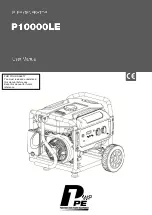
www.kvarta.net
5
/
36
5
RDS300/RDS500/RDS1000 User Manual 3.10
Group Description
Group Description
0A
Basic tuning and switching information
8A
Traffic Message Channel or ODA
0B
Basic tuning and switching information
8B
Open Data Applications
1A
Program Item Number and slow labeling
codes
9A
Emergency Warning System or ODA
1B
Program Item Number
9B
Open Data Applications
2A
Radiotext only
10A
Program Type Name
2B
Radiotext only
10B
Open Data Applications
3A
Applications Identification for ODA
11A
Open Data Applications
3B
Open Data Applications
11B
Open Data Applications
4A
Clock-time and date
12A
Open Data Applications
4B
Open Data Applications
12B
Open Data Applications
5A
Transparent Data Channels or ODA
13A
Enhanced Radio Paging or ODA
5B
Transparent Data Channels or ODA
13B
Open Data Applications
6A
In House applications or ODA
14A
Enhanced Other Networks information only
6B
In House applications or ODA
14B
Enhanced Other Networks information only
7A
Radio Paging or ODA
15A
Undefined
7B
Open Data Applications
15B
Fast switching information only
The KVARTA RDS/RBDS RDS1000 encoder is designed to be fully compatible with both the European
and American standards, and broadcast of any or all of the data groups is fully user selectable, to
allow the broadcaster to tailor the RBDS data stream to fit their needs.
1.3.
Functions of RDS/RBDS.
RDS is a powerful tool for communicating within a network of transmitters, and controlling and
programming the receivers tuned to that network. Although the functions of RDS are almost too
numerous to detail, these are the primary types of data transmitted over RDS/RBS.
1.
The PI, or Program Identification, code.
This is a hexadecimal code that identifies a
particular program. This is a required item, as the PI code acts as the digital identification for
your station. In Europe and other countries, the PI code is assigned by the authorities; in the US it
can be calculated by using your stations’ call letters, provided you have a four-letter set. See the
PI section of Appendix A for the calculation, For three letter calls, the PIs have been assigned a
separate set of hex codes that are listed in the RBDS Standard (NRSC-4), also available on line.
The PI code is transmitted in each of the 32 possible groups of RBDS data.
2.
The PTY, or Program Type, code.
This is a numerical code that labels your format, the type of
programming carried on your station. Be it Top 40, Rock, Classical, Religious or Talk, there is a
code for you (or at least something close). The transmission of this code will allow the listener to
search the FM band for a particular format, instead of by frequency. The codes have been
defined and are listed in the ‘PTY’ section of Appendix A. BEWARE - the PTY codes for the
European (CENELEC) standard are different from those defined by the United States standard
(NRSC), so be certain you’re looking at the right part of the table to broadcast the correct code.
3.
The PTYN, or Program Type Name.
Just 8 characters.






































